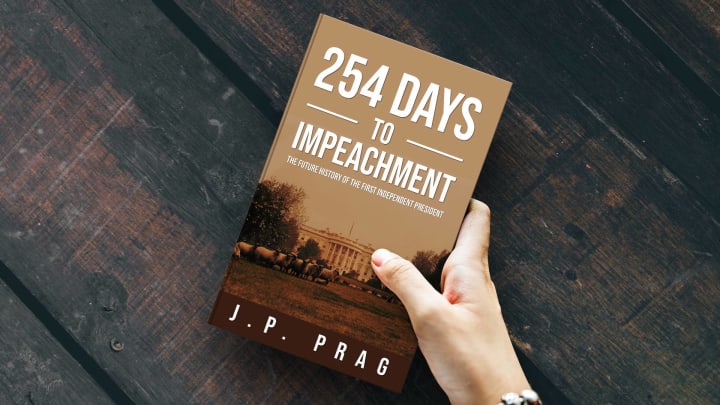
February 9th (Washington, D.C.) – The President has delivered a new set of Executive Orders for numerous federal departments and agencies.
Why it matters: Since Inauguration Day, the President has attempted to use Executive Orders to completely remake the United States and the world at large, all the while sidestepping Congress. Over the past few weeks, these orders have taken an inward turn towards the organization of the White House itself and the Executive Branch in general.
Catching up: Just four days ago, the President redefined the Cabinet by creating a new unpaid position called “Superintendent” for 14 specific interests. Two of those positions were filled by the President and Vice President and the rest were assigned to existing department secretaries or elevated agency heads.
Of note: Under the President’s reorganization of the Cabinet, several former members now report to their own equal-rank colleagues. For instance, the President has made several orders for the Department of Education, but that—as far as the President is concerned—is subservient to the Supervisor of People and Society, a.k.a. the Secretary of Health and Human Resources.
What Was Ordered for Education?
Of particular importance, the President focused much of the orders on what to do with children...
- New daily education plan: The President wants a “new paradigm” in education where the focus is not on “subjects” but on “core competencies”. Among these competencies are “critical thinking”, “analysis”, “empathy”, “patriotism”, “actualization experience”, and “grit”. Additional competencies are to be determined in working groups under the tutelage of the Secretary of Education.
- School time expansion: Along the same lines, the President wants to have the school day shifted to align with the clinically recommended hours for the various age groups, have school be in session year-round, have learning be more “self-paced”, eliminate homework but have a longer school day, have food provided during extended meal periods, and other changes yet to be determined—again based on the working groups.
- Yes, but: Education in America is hyper local and it remains to be seen how a federal department with little authority and control could possibly compel these changes to come about.
There were More Education Related Orders?
Education was not limited to just primary and secondary, but extended beyond those early learning years...
- Stop using the term “college”: Per the order, the government will be changing terminology from using expressions like “college” or “college-bound” to be more generic, like “further education”. The President has also given a definition of this term to not just mean university, but also apprenticeships, internships, or other non-traditional education paths. “Universities and colleges have a monopoly in this country,” the President said, “and we have a responsibility under the law to break up monopolies. Meanwhile, we are in desperate need of skilled tradespeople. We must support all paths to further education and stop pretending that pursuing college degrees is the only way to learn. More so, we need to end the gatekeeper role that private institutions have unfairly claimed.”
- Hiring full-time professors: In the text of the order, the President expressed great disdain for how colleges and universities have gotten in the habit of hiring multiple part-time adjunct professors so they do not have to pay benefits or give them credits towards tenure. A core part of the President’s platform was on decreasing underemployment or people needing multiple jobs to make ends meet. Further, the President accused the colleges and universities of illegal union busting by keeping their staff underpaid and with no way to organize. With this order, the President wants to see if access to loan programs for education can be tied to the percentage of staff that are full-time versus adjunct.
What Else Was Ordered?
Aside from all these Executive Orders for the Department of Education, the President had a few other odds and ends requests. Of particular note were...
- Independent contractors: The newly rebranded Supervisor of Freedom, Law, and Justice née Attorney General has been tasked with going after organizations like the WWE for abusing the term “independent contractors” when paying their performers when they appear to fit the definition of an “employee”. The same, the President said, is happening with the NCAA and other college sports organizations where the people are obviously not amateurs doing this on the side, but are revenue-generating employees.
- Redefine unemployment: In the same vein as employees, the Supervisor of Commerce and Labor is to change the measurement methodologies to get “real statistics for unemployment instead of the misleading hodgepodge we have now.” Of particular concern was that unemployment only counts people actively looking for work and not those who have given up or do not report, and that it does not take into account “underemployment, people working multiple jobs, the poverty rate due to these low wages, and other similar measures and employer abuses.” Based upon the text, the President does not want to see numbers gussied up, but instead wants to ensure they truly reflect the reality felt by people on the ground.
- Keep your luggage: The Supervisor of Interconnectivity was given a task closer to what would be expected of the position formerly known as the Secretary of Transportation. Here, the President has created a pet project to fundamentally change the boarding and security process within airports. Instead of checking bags before heading towards the terminals, all bags would be brought to the gate and checked there, no matter their size, and only small carry-ons would be allowed on the plane. This way, bags would not be transported on the tarmac between planes, but instead would be brought back into the airport to be moved between flights by their owners. The hope is that making people responsible for their own luggage would ensure it does not get lost and would cut down on issues that have only become more exacerbated over the years.
- Profiling and air marshals: In another airline related move, the President would like to see an armed air marshal assigned to every single flight instead of the less than 2% that have them now. Further, the order calls for training TSA agents in behavioral analysis so that they can talk with people in line and pull them out as needed for additional screening, using a profiling system more akin to what is seen in Israel.
- Burying power lines: In a cross-area order, as a matter of national security—thus involving the Supervisor of Safety and Security and the more than $1 trillion allocated to military efforts—the President has stated a need to harden the power grid to protect it against anything from EMP attacks to natural solar flares. Specifically, this includes building underground standing accessible tunnels that would house power lines and other infrastructure. At this time, only a study has been requested and no funds have been allocated to undertake the project.
What Happens Next?
The Communications Director for the President said that a lot more is planned and desired, but it will require buy-in and action from Congress. As such, the administration has requested something rare for a President during a first term: the ability to address both chambers of Congress in a State of the Union address.

The above piece is an excerpt from the speculative fiction novel 254 Days to Impeachment: The Future History of the First Independent President by J.P. Prag, available at booksellers worldwide.

Learn more about author J.P. Prag at www.jpprag.com.

254 Days to Impeachment is a work of mixed fiction and nonfiction elements. With the fiction elements, any names, characters, places, events, and incidents that bear any resemblance to reality is purely coincidental. For the nonfiction elements, no names have been changed, no characters invented, no events fabricated except for hypothetical situations.
About the Creator
J.P. Prag
J.P. Prag is the author of "Aestas ¤ The Yellow Balloon", "Compendium of Humanity's End", "254 Days to Impeachment", "Always Divided, Never United", "New & Improved: The United States of America", and more! Learn more at www.jpprag.com.






Comments
There are no comments for this story
Be the first to respond and start the conversation.